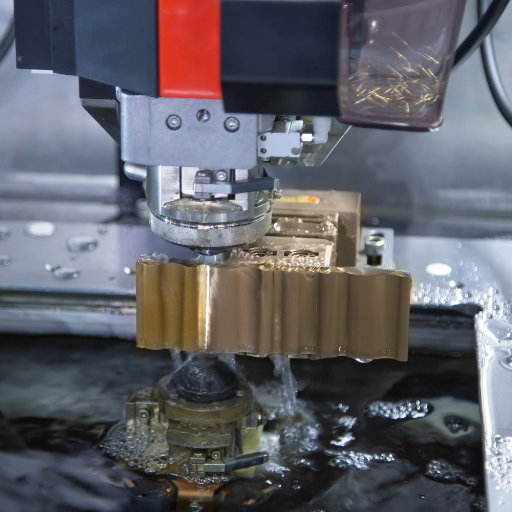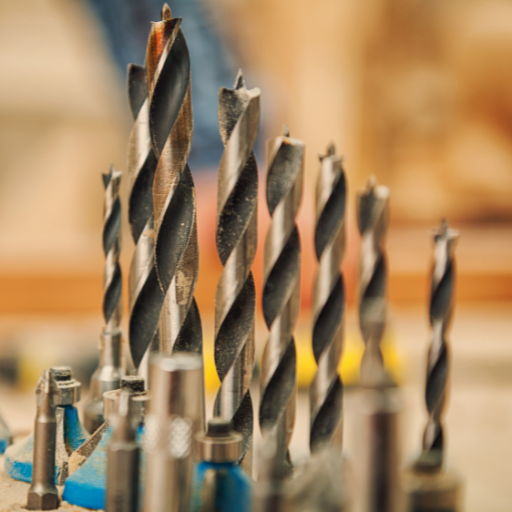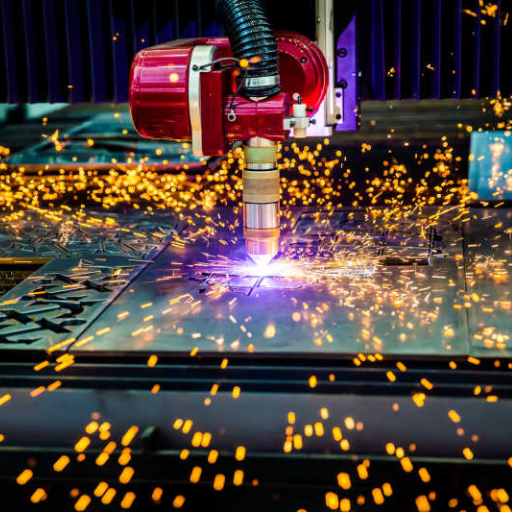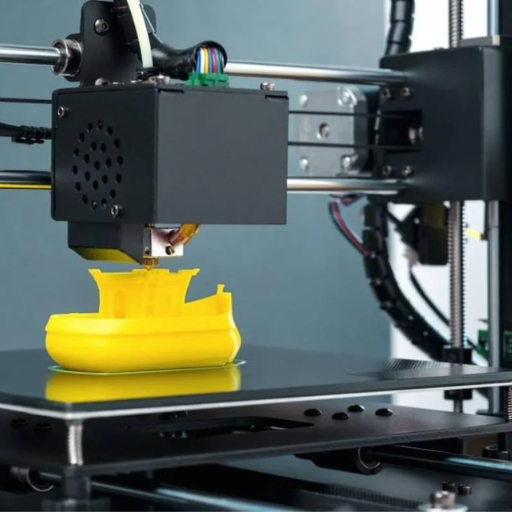What is Hard Coat Anodize?
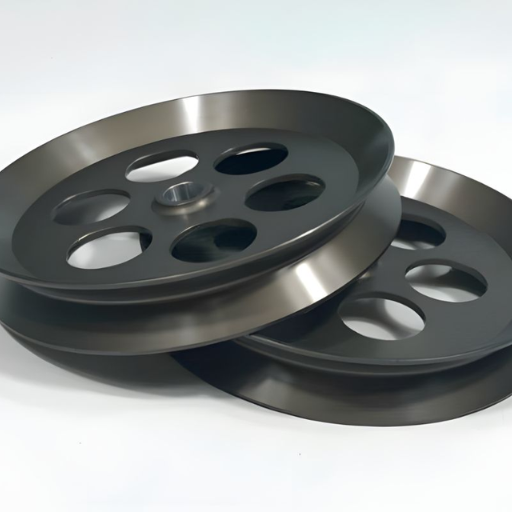
Image source: https://leadrp.net/
Understanding Anodizing of Aluminum
Benefits of Hard Coat Anodizing
Hard coat anodizing has a lot of applications and offers numerous benefits. Most significantly, it has excellent hardness and wear properties that extend the life of aluminum parts by far. This wear resistance is ideal for hard coat anodizing in high stress and friction situations such as gears, bearings, and pistons.
Also, hard coat anodizing has higher corrosion resistance. The method creates a protective oxide layer which is thick and dense to shield the underlying aluminum from harsh environmental conditions including salt water, chemicals and very high or low temperatures. This property makes it ideal for marine industry applications as well as aerospace, industrial where corrosion resistance is necessary.
Thermal insulation properties are another important advantage associated with hard coat anodizing. Hard coat anodized surfaces are able to bear high temperature levels while at the same time acting as a barrier to insulate heat in various uses. In automotive manufacturing and electronics industries this is quite essential as they require controlled temperatures.
Finally, hard coat anodizing enhances electrical insulation. The presence of anodized layer stops flow of electricity hence it’s valuable in electronic components requiring insulation properties.
In essence, hard coat anodizing increases aluminium durability, corrosion resistance, thermal insulation as well as electrical insulation making it a versatile finish that is invaluable in many challenging applications.
Applications of Hardcoat Anodize
Furthermore, there are advantages of using anodized parts such as gears; pistons; and hydraulic components which include increased durability against physical wear in industrial machinery. Lastly, the electronics industry has found use for hard coat anodizing especially where devices or elements require precise temperature regulation as well as electrical division due to insulation purposes. These different applications show how versatilely effective hard coat anodizing can be when it comes to extending the life span as well as functionality of aluminum products.
How Does the Hard Coat Anodizing Process Work?
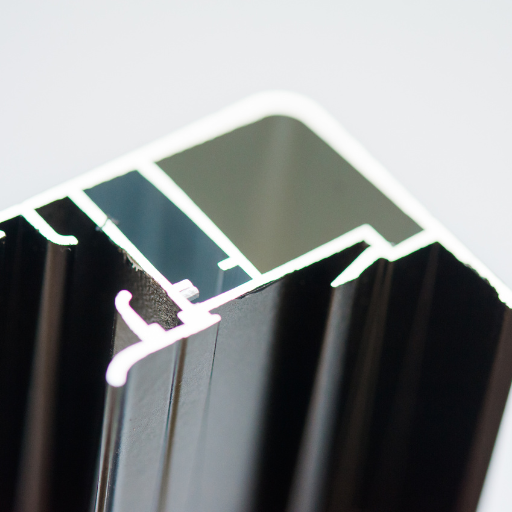
Overview of the Anodizing Process
Types of Anodizing Techniques
- Type I (Chromic Acid Anodizing): It is one that uses chromic acid as the electrolyte. A thinner, more ductile oxide layer is commonly produced by this method, so it works well for applications where flexible aluminum parts are needed. This technique offers great corrosion resistance but it has few colors to choose from.
- Type II (Sulfuric Acid Anodizing): The anodizing type that is applied most frequently and uses sulfuric acid as the electrolyte. This kind of process develops a thicker oxide coating than Type I, thereby yielding superior corrosion resistance and a more durable finish. Furthermore, it permits various color dyeing alternatives hence its use in architectural and consumer product sectors.
- Type III (Hard Anodizing): It is also referred to as hard coat anodizing and employs sulfuric acid but at lower temperatures and higher current densities. Consequently, it creates an extremely tough, thick oxide film with excellent wear properties that finds wide acceptance in such industrial/military applications where part durability takes precedence.
Steps Involved in Type III Anodizing
- Cleaning: The aluminum part is entirely cleaned to get rid of all dirt, grease and surface contamination. This is usually done through an alkali or acidic cleaner in order to ensure that the metal is free from any dirt before oxide coating starts.
- Etching: The part is then etched using acid solution so as to remove a thin layer on the surface. At this stage, a uniform surface texture is formed which is important in formation of consistent oxide layer.
- Desmutting: After etching, desmutting is performed for removal of any residues or smut left on the surface to ensure that it is ready for anodizing process on the aluminum.
- Anodizing Bath: A higher current density has been applied so as to build up a thick hard oxide layer. For this stage, its time span will depend on how thick one wants his/her film.
- Rinsing: This rinses off any left over acid from when anodizing was taking place hence suspending these processes and preparing it for further steps.
- Sealing (Optional): Depending on purpose of use, one can choose either sealing or not sealing their anodized surfaces at this point. Normally, one immerses these components in hot water or chemical sealing solution during this process.
- Final Inspection: The oxide coating on the anodized component undergoes a final inspection in order to check if it meets required specifications. Its thickness, hardness and appearance are measured so that good quality results are obtained.
Role of Sulfuric Acid in Type III Anodize
What Materials Can Be Hardcoat Anodized?
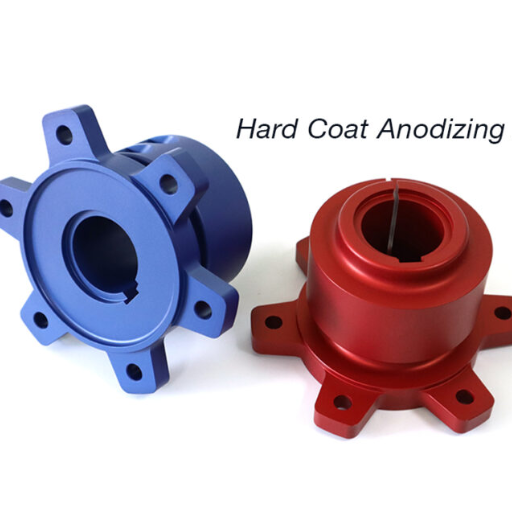
Firstly, aluminum and its alloys are the most suited materials for hardcoat anodizing. This is because when treated to the hard anodizing process, aluminum forms a strong, protective oxide layer that improves wear resistance and prevents corrosion. Titanium and some magnesium alloys are also capable of going through hardcoat anodizing but they are not as common. These materials can bring about similar benefits like greater surface hardness and longer life in demanding applications.
Compatibility with Different Aluminum Alloys
Hardcoat anodizing is compatible with many different types of aluminum alloys; however, specific alloy composition affects the properties of the resulting films. Some typical aluminum alloys and their compatibility with hardcoat anodization include:
- Alloy 6061: This metal accounts for one of the majority anodized aluminum grades due to its good mechanical properties and excellent response to anodic treatment. The 6061 oxide coating provides high hardness and good corrosion resistance.
- Hardness (Hardcoat): 60-65 HRC
- Thickness: 0.001″ to 0.004″ (25.4 to 102 microns)
- Alloy 7075: It has high strength-to-weight ratio; hence, it is one of the most popular aircraft structural materials that can be subjected to hard coat anodization although it can give oxide film which is slightly less uniform due its zinc content.
- Hardness (Hardcoat): 55-60 HRC
- Thickness: 0.001″ to 0.003″ (25.4 to 76.2 microns)
- Alloy 2024: This alloy contains copper which makes it more difficult to be used in the process of anodization.However under controlled conditions, satisfactory hardcoats may be achieved on this material type.
- Hardness (Hardcoat): 50-55 HRC
- Thickness: 0.001″ to 0.003″ (25.4 to 76.2 microns)
- Alloy 5000 Series: While these alloys contain a significant amount of magnesium, they are well-suited for hardcoat anodizing and may result in slightly irregular surface texture.
- Hardness (Hardcoat): 45-50 HRC
- Thickness: 0.001″ to 0.003″ (25.4 to 76.2 microns)
Effect on Surface Hardness and Abrasion Resistance
Anodizing hard coat is a procedure that notably improves the surface hardness of aluminum alloys so as to make more resistant to abrasion and wear. This process converts the surface of aluminum into aluminum oxide, which is much harder than the base metal. The result is an oxide coating whose hardness is comparable to hardened steel; its hardness values fall within 45-65 HRC depending on the alloy.
Increasing surface hardness means improved resistance to abrasive action. Such surfaces can sustain severe mechanical wear with thicker anodizing thickness ranging from 0.001” up to 0.004”, thus meet demands for applications where durability and long life are needed. Typically, aerospace industry, automotive sector, military service among other industries tend to use such alloys like 6061 and 7075 since they respond well to anodizing due to their high resistance against abrasion and damage from surfaces.
Moreover, through having better control over conditions of anodizing such as current density, temperature as well as electrolyte concentration can also boost these features further. Such controlled measures ensure evenness and continuity in the oxide layer hence maximizing both hardness and resistance to abrasion. By utilizing these procedures, parts produced are able not only resist wearing but also preserve their functions while maintaining structural soundness over time.
Special Considerations for Aluminum Components
For optimized efficiency and durability, a variety of special considerations have to be made when dealing with aluminum components. The selection of the alloy is one such consideration as different alloys have various strengths, anodizing potentials and corrosion resistances. As an instance, for structural applications 6061 and 7075 are excellent because they have high strength and respond well to anodizing but other alloys may be preferred due to their properties in certain instances.
Another point is that the component’s geometry and design affects anodizing process. Uneven anodic oxidation can occur on complex shapes having sharp edges or deep recesses thus affecting surface properties consistency. At the design stage, these factors should be taken into account so that potential problems are minimized.
Moreover, pre-treatment procedures like cleaning and etching play a substantial role in preparing surfaces before anodizing. Anodized layer will not adhere properly if there is any contamination or residue at the surfaces leading to its poor performance. Proper etching after a thorough cleaning produces a clean reactive surface ready for anodizing.
Furthermore, post-treatments such as sealing are very effective in improving the longevity and performance of aluminum which was subjected to anodic oxidation. This helps close the pores within the oxidized layer thus enhancing corrosion resistance and protective effect on it.
Lastly, understanding the operating environment is key. Aluminum parts used in extreme conditions like marine areas or heavy industrial settings might need additional coatings or treatments so as to increase their resistance to wear and corrosion. Engineers and designers must consider these things if they want aluminize components which satisfy stringent requirements for specific applications.
Why Choose Hard Anodize Coating?
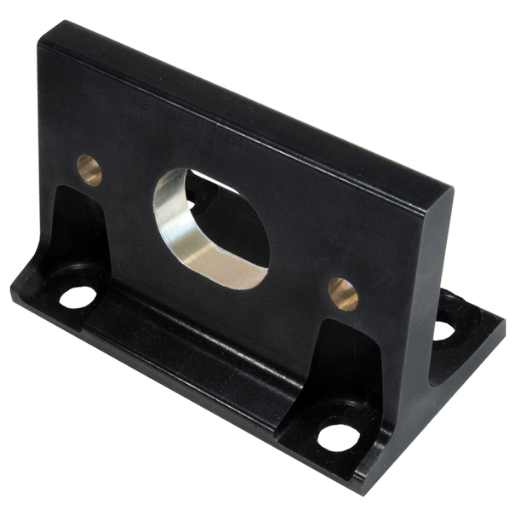
Advantages Over Traditional Coatings
In several key areas, hard anodize coating outperforms traditional coatings. Firstly, it has better wear resistance because its hardness is typically between 60-70 HRC (Rockwell Hardness Scale), which is suitable for high friction or abrasion parts. Secondly, it provides for improved corrosion resistance; therefore, hard anodized aluminum can survive marine environments and industries thus reducing maintenance costs while increasing the life of components. Thirdly, the thickness of this layer ranges from 25 to 100 microns and creates a strong defense against mechanical impacts as well as environmental effects.
Moreover, hard anodize coatings may be dyed in various colors thereby allowing both functional and aesthetic customization. This can be very useful especially when the appearance of the components matter most without compromising on performance. Finally, it enhances overall surface hardness hence transforming aluminum into a sturdy substance that is appropriate for high-stress situations. By providing full spectrum of benefits, hard anodize coating appears as a better alternative to traditional methods that ensure sustainable protection and efficiency in respect to critical parts.
Enhanced Corrosion and Wear Resistance
Hard anodize coatings provide enhanced resistance to corrosion and wear, which contribute significantly to the durability and dependability of aluminum parts. Hard anodizing layers aluminium surfaces with oxide film that shields them from various environmental factors such as salt or industrial atmospheres. The oxidation process is slowed down due to this layer, thus preventing damage and rust of components even over prolonged periods.
In addition, hard anodization of aluminum makes it extremely resistant to wear. In other words, this is done by making a thick solid protective coating that keeps abrasive wearing away from surface area. Hard anodized component undergoes extreme frictional forces in highly stressed situations where contact wears occurs. This kind of coating does more than just extend life cycle of parts; it also preserves their functionality as well as look even when subjected through harsh operation conditions.
Durability and Maintenance of Anodic Coatings
The durability of anodic coatings is recognized for their high standards, which is as a result of the electrochemical process that produces aluminium surfaces with a thick, hard oxide coating. These coatings can last for a long time and prevent wear and corrosion in high-stress situations as well. Proper maintenance is critical to ensure anodic coatings keep up their efficiency.
Maintaining anodic coatings means using regular cleaning to remove impurities which could have serious effects on the surface over time. To avoid damaging the anodized layer, use mild non-abrasive cleaners. Also do not use strong chemicals or rough stem-cleaning tool because they may affect the protective film. In industrial facilities one should make sure that periodic inspections are carried out to determine the condition of the anodize coating so that it can be dealt with promptly in case it is damaged further.
Therefore through proper care and regular maintenance, this product’s enhanced durability can be sustained so that aluminum components will continue performing efficiently and dependably under difficult conditions.
How Thick Should a Hard Coat Anodize Be?
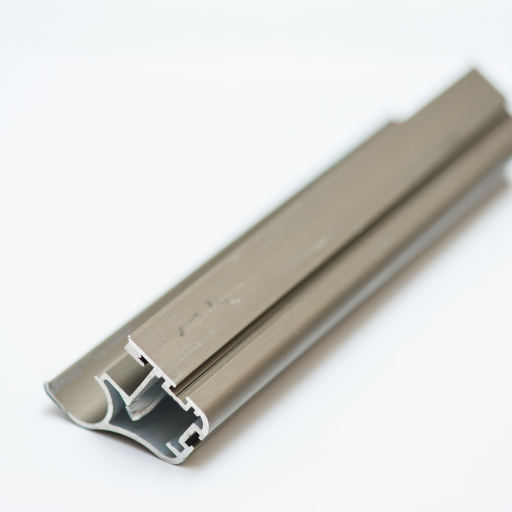
Typically, a hard coat anodize may be between 25 to 150 microns thick (1-6 mils), depending on the application and desired properties. Thicker coatings are more resistant to wear and corrosion, thus making them preferred in high stress environments or heavy duty applications. However, thinner ones can also serve the purpose for parts that require fine dimensional tolerances. Thickness should be balanced, so as to meet performance requirements without compromising integrity of the part.
Standard Coating Thickness Guidelines
There are a number of critical factors that need to be considered when deciding on the appropriate thickness of hard coat anodize. Here is a guide with standard answers:
- General Applications:
- Thickness: 25-50 microns (1-2 mils)
- Justification: Suitable for components exposed to moderate wear and corrosion. Offers a good combination of toughness and precision.
- High-Wear Environments:
- Thickness: 50-75 microns (2-3 mils)
- Justification: Ideal for parts subjected to high-friction or abrasive conditions, offering enhanced wear resistance.
- Heavy-Duty Applications:
- Thickness: 75-150 microns (3-6 mils)
- Justification: Best fit for industries where parts undergo intense stresses and aggressive effects such as those in aerospace, marine applications etc.
- Precision Components:
- Thickness: Less than 25 microns (less than 1 mil)
- Justification: Preferred for parts that require tight dimensional tolerances. The thinner film does not distort dimensions while providing adequate protection.
Technical Parameters:
- Wear Resistance: Increase proportionally with coating thickness; thicker coating can withstand mechanical wear better.
- Corrosion Resistance: Improve with increased coating thickness; thick layers provide stronger shield against tough environment conditions.
- Dimensional Tolerance: Otherwise thin films retain most original part dimensions; very crucial in precise engineering cases.
It is only by striking a balance between needs specific to an application and the thickness of the coating that it is possible to achieve optimum performance and durability of anodized parts.
Impact of Coating Thickness on Performance
Regulations and Standards, Including MIL-A-8625
In the anodizing industry, consistency, quality and safety of anodized components are maintained through regulation. MIL-A-8625 is a critical standard for this purpose as it outlines anodic coatings on aluminum. MIL-A-8625 classifies anodic coatings into various types and classes in line with coating thickness and properties required for specific applications.
Chromic acid anodizing is stipulated under Type I, while sulfuric acid anodizing falls under Type II and hard oxidization for tougher applications is described in Type III. Each type is further divided into classes based on different coating thickness levels and intended use; thus, they can be used across multiple industries regardless of their specifications. By adhering to these standards, the designers can rest assured that their products will perform at optimum levels by exhibiting dependable resistance to wear and corrosion as well as dimensional stability.
Furthermore, other international standards like ISO 7599 and ASTM B580 provide guidelines on the technology of the process such as thickness, appearance and testing procedures of how to achieve it effectively. These requirements collectively ensure consistent production of anodized products thereby promoting its use in aerospace, automotive or electronic sectors.
Can Hard Coat Anodized Surfaces Be Dyed?
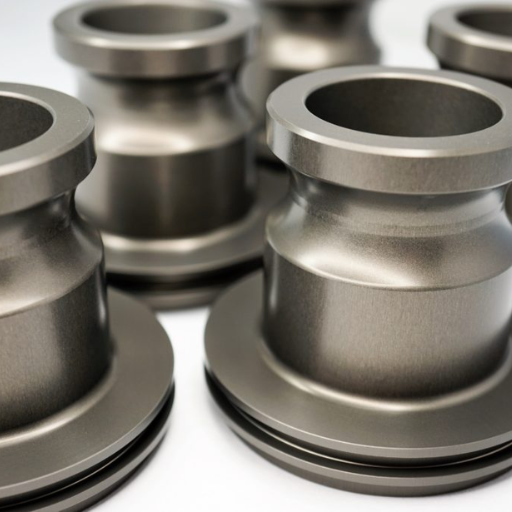
Possibilities for Coloring Type III Anodize
Common Dyeing Techniques and Limitations
1. Immersion Dyeing:
The immersion dyeing is one of the most common methods used for coloring anodized surfaces, where the anodized part is immersed in a dye bath and the dye soaked through the porous film and sealed to retain color – this is especially important for hardcoat anodizing because of its dense oxide layer.
2. Electrolytic Coloring:
Electrolytic coloring also referred to as two-step coloring involves introducing metallic salts into the pores of the anodic oxide layer by applying electric current. This method can be used with hard-coat anodizing, and it results in various stable colors that resist wear and tear. However, it requires precise control and is generally more complex than immersion dyeing.
3. Organic Dyeing:
By using organic dyes, this technique produces bright brilliant colors over a wide range of shades. In general, organic dye molecules are absorbed into the anodic oxide layer during this process. Despite providing excellent color diversity, it is far less durable than inorganic electrolytic processes, thus making it suitable mostly for aesthetics treatments rather than contact surfaces.
Limitations:
- Color Uniformity: The thickness of a hard coat anodized layers makes them difficult to uniformly color because they are so densely packed.
- Color Range: Coatings with thicker oxide layers like hard-anodized ones support only dark hues reducing significantly possible colors compared to thinner films.
- Complexity: For instance, electrolytic coloring is technically challenging since several variables have to be controlled accurately at all times; hence it complicates as well as raises its cost intensively.
Impact of Dye on Corrosion Resistance
Different types of dye in anodized coatings have different impacts on corrosion resistance, and this depends on factors such as types of dye and method of anodizing conducted. In general, the inclusion of dyes in the anodized layer may reduce to some extent the protection from corrosion offered by the layer.
- Organic Dyes: Organic dyes easily fade when exposed to ultraviolet light or harsh weather conditions than others. These are usually less stable and can absorb moisture leading to a slight decrease in corrosion resistance.
- Inorganic Pigments: On the other hand, dying techniques that utilize inorganic pigments such as electrolytic coloring provide greater resistance to corrosion compared with organic dyes. Generally, these pigments are more robust and long-lasting thereby preserving the integrity of the anodized layer against corrosive agents.
- Hard Coat Anodizing: Hard coat anodizing does not have a major effect on the ability of dyes to prevent corrosion when there is good control over process variables. For example, hard coat anodizing inherently has excellent resistance to corrosion; nevertheless, even after proper dying sealing requires a lot of care so that color leaching does not take place over time thus ensuring long term serviceability.
Reference sources
-
Xometry – Hard Coat Anodizing
- Xometry offers a comprehensive guide on hard coat anodizing, detailing its process, benefits, applications, and technical considerations. This source is valuable for understanding the intricacies of the technique and its implementation in various industries.
- Source: Xometry
-
AT Machining – Hard Coat Anodizing Aluminum: Your Ultimate Guide
- AT Machining provides an in-depth exploration of hard coat anodizing aluminum, covering the procedural steps, advantages, potential applications, and important factors to consider. This guide is designed to offer a thorough understanding of the hard coat anodizing process.
- Source: AT Machining
-
WayKen Rapid Manufacturing – Quick Guide to Understand Hard Anodizing of Aluminum
- WayKen’s article covers all essential aspects of aluminum hard coat anodizing, including its characteristics, process details, and practical uses. This resource is aimed at both beginners and professionals looking for detailed insights into hard anodizing.
- Source: WayKen Rapid Manufacturing
Frequently Asked Questions (FAQs)
Q: What is aluminum anodizing?
A: Aluminum anodizing is an electrochemical process that converts the metal surface into a durable, corrosion-resistant anodic oxide finish. The aluminum itself serves as an oxide film substrate, and because the finish is fully integrated with the aluminum substrate, it cannot chip or peel.
Q: What is type iii aluminum anodizing?
A: Type III aluminum anodizing, also known as hard coat anodizing or hard anodize, is a process that uses higher current densities to produce a dense anodic coating of aluminum. This type of anodizing creates a thicker, harder coating, often utilized for heavy-duty applications requiring enhanced wear and corrosion resistance.
Q: How does MIL-A-8625 type iii differ from other types of anodizing?
A: MIL-A-8625 Type III anodizing differs from other types like Type I and Type II primarily in terms of the coating’s thickness and hardness. Type III hard coat anodizing produces a significantly thicker and more durable coating, making it suitable for more demanding applications. Type I uses chromic acid, while Type II uses sulfuric acid.
Q: What are the common applications of hard coat anodizing?
A: Hard coat anodizing, also called type III aluminum anodizing, is commonly used in applications that require enhanced wear and corrosion resistance. These include aerospace components, automotive parts, military equipment, and other industrial applications where a hard, durable surface is necessary.
Q: What is the typical thickness of the coating in hard coat anodizing?
A: The thickness of the coating in hard coat anodizing usually ranges from 1 to 3 mils, with most applications requiring around 2 mils. This thickness ensures a robust and wear-resistant surface that can withstand harsh conditions.
Q: How does anodizing increase the durability of aluminum?
A: Anodizing increases the durability of aluminum by creating a tough, protective anodic coating of aluminum oxide on the surface. This coating acts as a barrier to corrosion and physical wear, significantly extending the life of the base material.
Q: Can hard anodized aluminum be colored?
A: Yes, while hard-anodized aluminum typically results in a dark gray coating, it can be dyed in various colors if desired. The porous nature of the oxide film allows for the absorption of dyes, although the range and vibrancy of colors are usually less compared to regular anodized aluminum.
Q: What are the benefits of anodizing over other surface treatments?
A: Anodizing, particularly hard coat anodizing, offers several benefits over other surface treatments. It provides a very hard and wear-resistant surface, enhances corrosion resistance, does not chip or peel, and maintains the natural appearance of metal. Additionally, anodizing produces a non-conductive coating that is suitable for certain electrical applications.
Q: How is hard coat anodizing performed?
A: Hard coat anodizing is performed by immersing aluminum in a sulfuric acid electrolyte bath and passing a high current through it. This creates a controlled and dense anodic coating of aluminum oxide on the surface. Specific parameters such as temperature, current density, and time are carefully managed to achieve the desired thickness and properties.
Q: Is hard coat anodizing suitable for all aluminum alloys?
A: While hard coat anodizing is effective for many aluminum alloys, its suitability can vary depending on the specific alloy composition. Alloys with a higher silicon or copper content may not anodize as well as others. It is generally best to consult with an expert to determine the compatibility of the specific aluminum alloy with hard coat anodizing.


